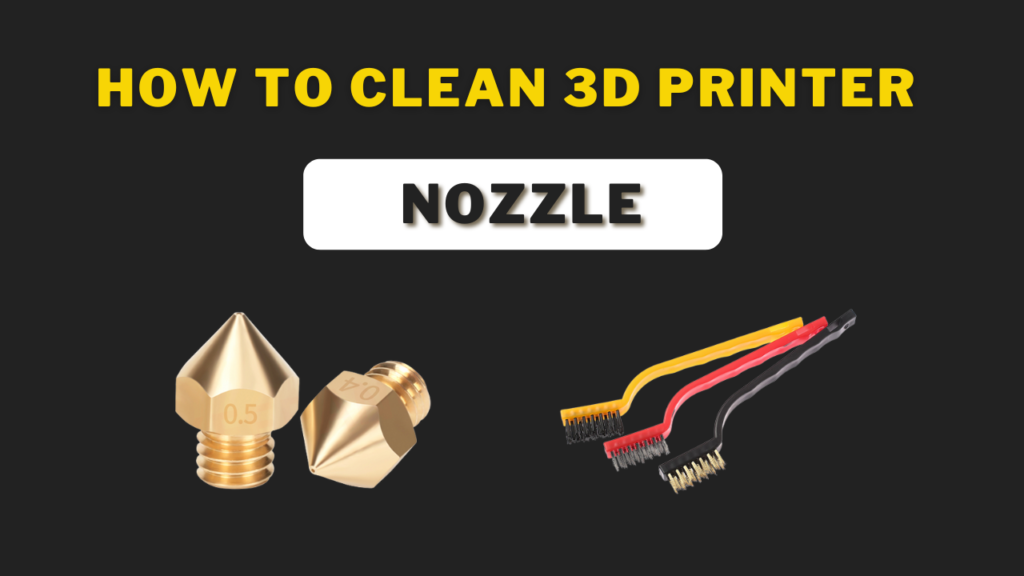3D printers are really useful for hobbyists and for those who wish to run small businesses. This is because these printers allow you to print out prototypes for your new product and you can then further refine those prototypes until you are satisfied. These printers are an investment and you need to keep them in the best shape possible otherwise they can stop working altogether.
Cleaning your 3D printer nozzle is essential and must be done regularly. There is a lot of debris that can clog up the nozzle and cause your prints to fail. If you want to improve your 3D printer’s performance and get better prints, then cleaning your nozzle should be your top priority. This blog will talk about how to clean the nozzle of your 3D printer.
Why should you clean your 3D Printer nozzle?
There are several reasons why you should clean your 3D printer nozzle on a regular basis. One reason is that it can help to prevent clogs. If your nozzle is clogged, it can cause your prints to come out poorly. Another reason is that it can help to improve the quality of your prints. If your nozzle is clean, your prints will be smoother and more detailed. Finally, cleaning your nozzle can also help to extend the life of your 3D printer.

CLEANING 3D PRINTER NOZZLE
It is important to keep your 3D printer nozzle clean in order to produce high-quality prints. Over time, debris and deposits can build up on the nozzle, causing it to clog and producing poor prints.
There are a few ways to clean your 3D printer nozzle. One way is to use a brass brush to remove any debris that may be stuck to the nozzle. Another way is to use a nozzle cleaning kit, which includes a set of small needles that can be used to clean out the nozzle.
PUSHING FILAMENT THROUGH
When you push filament through a 3D printer, you are essentially forcing it through a tiny hole under high pressure. The diameter of the filament and the size of the hole determine the amount of force required to push the filament through. The amount of force required also varies depending on the type of filament being used. For example, ABS filament is harder to push through a 3D printer than PLA filament.
The first step in pushing filament through a 3D printer is to heat up the filament so that it is soft and pliable. This can be done by using a filament heater or by setting the temperature of the 3D printer to the recommended temperature for the specific type of filament being used. Once the filament is heated, it can be inserted into the 3D printer.
The next step is to use a filament pusher to push the filament through the 3D printer. A filament pusher is a tool that is specifically designed to apply the necessary amount of force to push filament through a 3D printer. The size of the pusher depends on the size of the filament being used. Once the filament is pushed through the 3D printer, it is ready to be used for printing.
NEEDLES
Needles are used to clean printers by removing any build-up of ink or debris that may clog the nozzle. This helps to improve print quality and prevent issues such as streaks or smears. In most cases, needles can be used with alcohol to clean the print head.
If your nozzle is severely clogged, you may need to replace it. However, if you regularly clean your nozzle, you should be able to keep it in good condition for a long time.
ACETONE
Printers use a variety of chemicals, including acetone. While acetone is not particularly harmful, it can be a nuisance if it gets on your hands or clothes. When using a printer, be sure to wear gloves and to protect yourself from the chemicals. If you’ve been using your 3D printer for a while, you may notice that it can’t produce the kind of quality prints it used to.
This usually means that the nozzle’s become clogged with all the plastic that’s been extruded over time. You can clean it by soaking it in acetone for about 20 minutes, then wiping it down with a paper towel. You can also use a small needle or something similar to scrape off the plastic from the inside.
FAQS
How do you clean an old nozzle on a 3D printer?
Cleaning a nozzle can be tricky. The best way to clean a nozzle is to use a bristle brush. You can normally find these at your local hardware store. They are usually used to clean grills and they do the same thing for the nozzle.
How can you tell if a nozzle is clogged?
You can identify a nozzle clog by observing a lack of droplets being ejected from the print head. If you see 2 or 3 lines of dots instead of one solid line that is an indication that something is clogging the nozzle. To fix the clog, you can simply clean the print head using a cotton swab and isopropyl alcohol.
How do you clean a clogged filament nozzle?
Filament extruders have a heated nozzle that melts and extrudes the plastic through a small opening. The filament can sometimes clog the nozzle, and it is important to clean out a clogged nozzle to prevent damage to the printer or the quality of the finished product. If you are using a filament extruder that uses a Bowden cable to push the filament, try pulling the filament out of the extruder. If you are using a direct extruder, pull the filament out of the extruder, then unload the extruder by heating it up and pulling out the filament.
Conclusion
Finding ways to clean a 3D printer nozzle is something that a lot of people struggle with, especially if your 3D printer is particularly prone to clogs. Thankfully there are some easy ways to clean all kinds of nozzle types, and you can see them all here.
We hope you enjoyed our article about how to clean 3D printer nozzles. With this knowledge, we hope that you can make the most of your 3D printing experience by being able to clean your nozzle when your printer is having issues. Also, Check out our more printer related articles on this website.

I am Mark Luke and I’m the founder of PrinterBio.com. I started this site because I was tired of dealing with the problems that come with using printers. I wanted to help others avoid the time and frustration I had, So I started this site based on my own experience & what I’ve learned from other professionals. My goal is to help you find the right printer and easily solve any problems you may have with your printer.